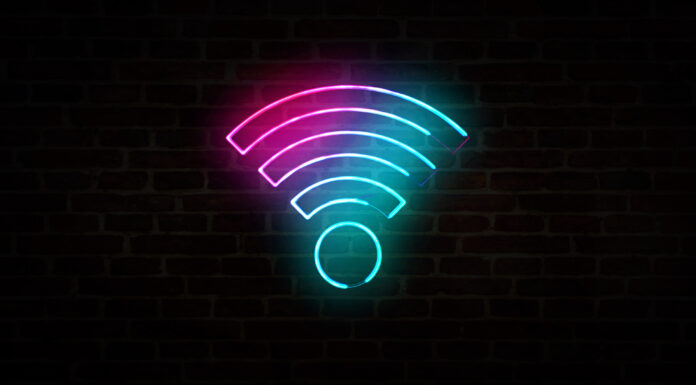With an attach rate of all connected devices, Wi-Fi will remain the workhorse for indoor connectivity
All indicators suggest the future of U.S. economic growth will be grounded in fundamental technologies that combine computing and connectivity. And whether that connectivity is provided by 4G/5G (and future 6G) networks, non-terrestrial networks (NTNs) or Wi-Fi, expanding network reach depends on the availability of spectrum.
In 2020, the first Trump Administration identified the full 1,200 megahertz of the 6 GHz band to Wi-Fi. And just this week, Robin Colwell, Deputy Assistant to President Trump confirmed the band will stay that way. “I don’t understand how anyone could believe we are trying to go back on that now. It worked. We were right.” Now that the Federal Communications Commission (FCC) has regained auction authority and received direction from the Trump Administration to identify 800 megahertz of spectrum to auction for licensed use, policy discussions have shifted to how best meet our national goals going forward.
During the recent Spectrum Policy Symposium hosted by the National Telecommunications and Information Administration (NTIA), experts gathered to discuss present and future-looking priorities. There was general consensus that spectrum-related provisions in the One Big Beautiful Bill Act (OBBA) are a significant step in the right direction. But now, as Broadcom Director of Product Marketing and Technology Strategy Chris Szymanski put it during a panel discussion at the event, “There’s absolutely more work to do.”
Citing Broadcom data, Szymanski said the company estimates that 99.9% of all internet traffic crosses at least one of its chips — “We’re aptly named” — across licensed, unlicensed and shared spectrum. “What we’re really looking at is what tool is needed to get the data to and from the end user to drive that next generation of use cases.”
The rise of AI will require more uplink capacity
He reflected on 3G and 4G supporting the proliferation of streaming video which will continue to account for the majority of internet traffic in the mid term. However, as AI-enabled devices like the Ray-Ban Meta smart glasses see broader adoption, there needs to be more uplink capacity made available. Referencing Tony Stark’s robotic assistant Jarvis from the Marvel films, Szymanski said, “Broadcom is looking at the KPIs that would be needed to bring about a true Jarvis-like voice experience…[where] the uplink is incredibly important.”
As AI goes mass-market, he said the ratio of downlink to uplink would shift from 90/10 to 80/20 and, for some use cases, closer to 50/50. Specifically, Szymanski recommended adding licensed high-power mobile communications in sub-5 GHz frequencies given coverage and propagation benefits. For Wi-Fi, he called out interest in bringing unlicensed connectivity to 7.125-7.250 GHz. If this were combined with the 1200 megahertz in the 6 GHz band allocated for Wi-Fi 6 E, 6 GHz
Wi-Fi could gain a fourth 320 megahertz channel. This will also be relevant with the advent of Wi-Fi 8 UHR (ultra-high reliability designed to support AI-enabled use cases) and even Wi-Fi 9 which could possibly have two 640 megahertz channels.
Back in the present, Szymanski said there are over 1 billion 6 GHz-capable UEs in-market with many more coming online, more than 15 million access points in North America by year-end, and that 25%-30% of traffic in 6 GHz Wi-Fi-equipped stadiums traverses the 6 GHz band. “We’d really like to see the NTIA and FCC focus on those bands that are fit for right now, that are needed for the applications today…We think we need to start having those hard discussions.”
Wireless networks of the future require wireline investment today
While the U.S. moved fast and early to open up all 1200 megahertz of the 6 GHz band for unlicensed use, other markets have divided the band between unlicensed and licensed use. Click here for background on that. During the symposium, CTIA SVP and General Counsel Umair Javed discussed global dynamics around 6 GHz as an IMT band with French officials pushing for that outcome, and gaining support from Chinese infrastructure and device vendors looking to provide support with compatible network kit and user equipment. Javed said the U.S. could provide secure alternatives and “get back in the game.”
Szymanski strongly disagreed with that position and likened it to running a race, taking the lead, then stopping and running backwards so the other side can catch up. Regarding the unlicensed use of all of the 6 GHz band, he said he had never seen something so successfully move from rulemaking to mass deployment.
“The race to 5G, the race to Wi-Fi — it’s a race to capability,” he said. Heeding Javed’s advice would be “hobbling U.S. capability and then arming the people that supposedly we’re concerned about by giving them a competitive advantage…to me, that’s sort of sheer crazy.”
He continued: “At the end of the day, what I’d like to see is policy match technical capability and market reality. The market reality is we’ve got billions of devices online and coming.” The U.S. focus should be on building fiber. “If we’re going to have the wireless networks of the future, we need to invest in the wired networks of today so that we can have the capacity to do that…Wi-Fi is going to be the workhorse indoors. It’s got the attach rate of every device…The FCC got it right. I’m sorry other countries got it wrong…There’s going to be a scorecard.”

